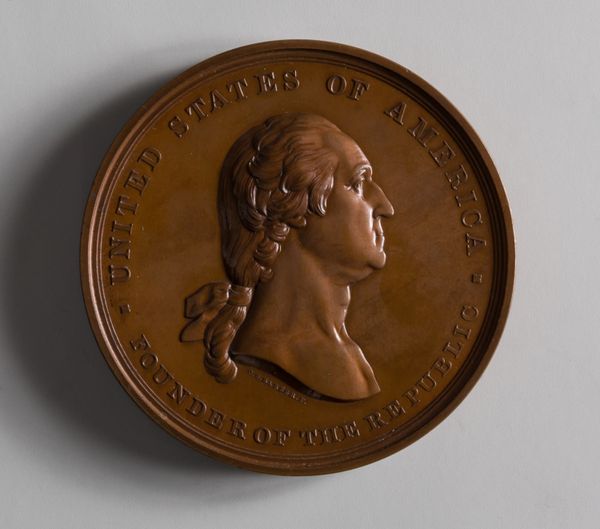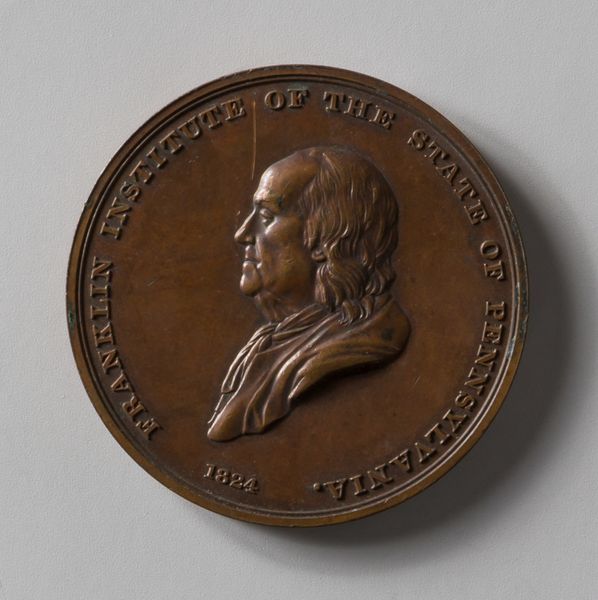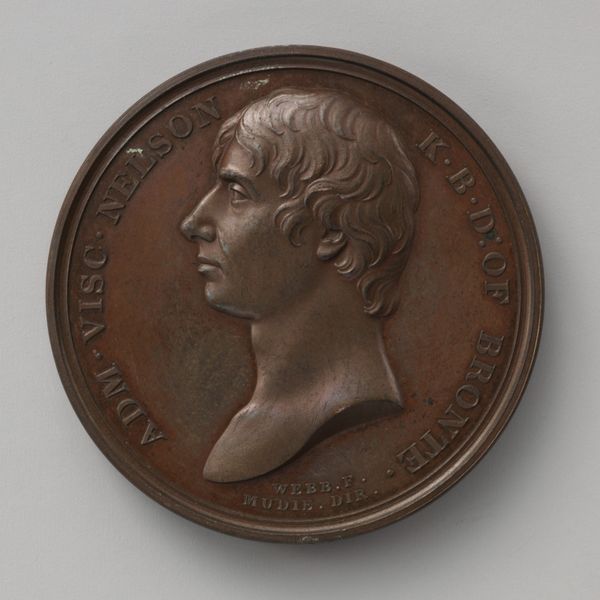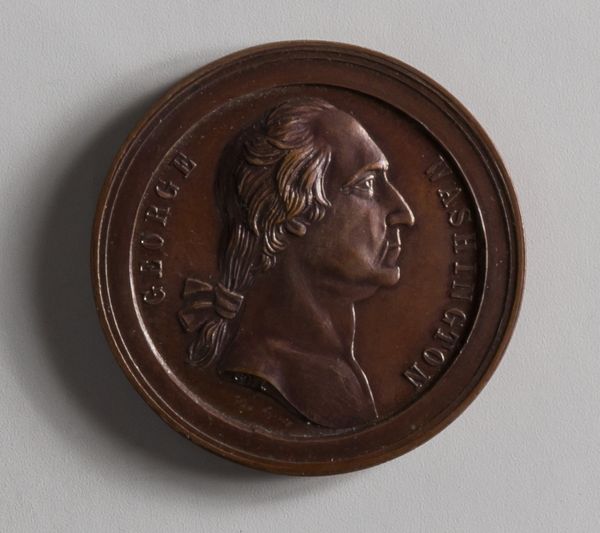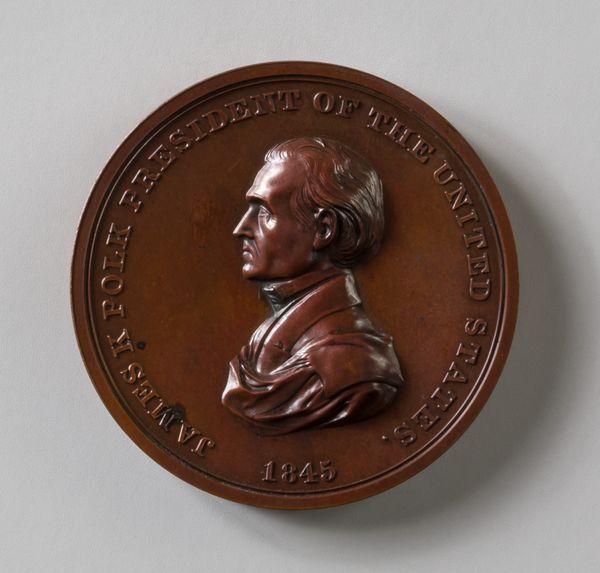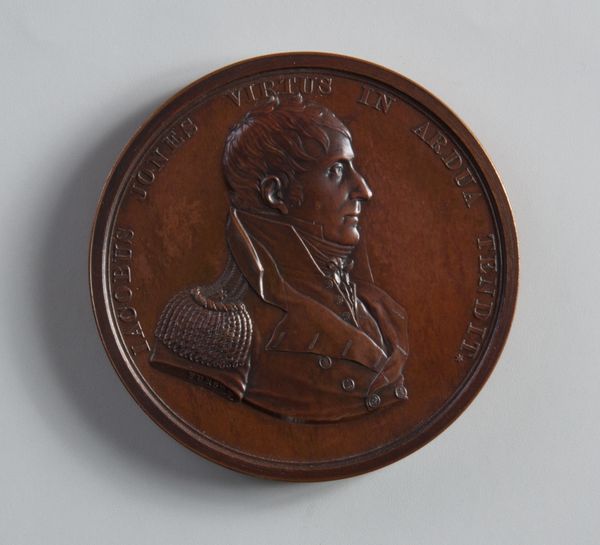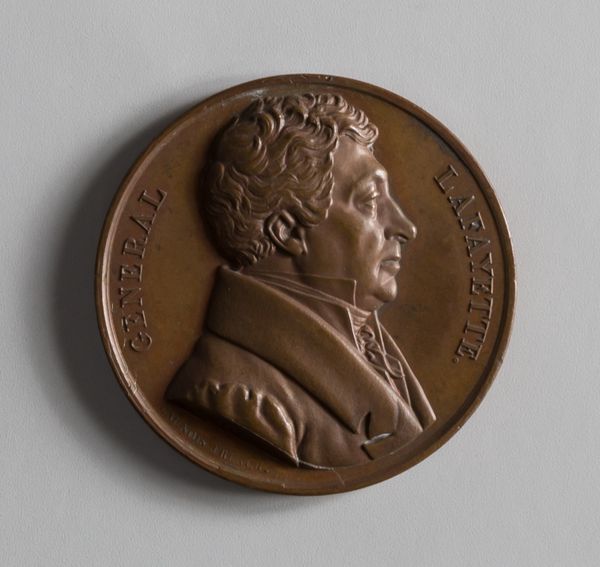
metal, bronze, sculpture
#
portrait
#
neoclacissism
#
metal
#
sculpture
#
bronze
#
sculpture
#
men
#
profile
Dimensions: Diam. 2 1/2 in. (6.4 cm)
Copyright: Public Domain
Curator: Here we have Moritz Fürst's bronze sculpture, "Major General William H. Harrison," crafted sometime between 1807 and 1845. Editor: It's remarkable, isn't it? There's a quiet strength about the piece. That stark profile and the metal medium create such gravity. Curator: It certainly speaks to the era’s fascination with neoclassicism. What really interests me is how a material like bronze, traditionally associated with monuments and the elite, is employed here. It reduces this hero to something mass produced, shifting art beyond its typical realm of exclusive art to something easily circulated, handled, collected. Editor: The symbolism feels really dense. The profile view immediately recalls ancient coins and cameos—evoking a sense of timeless leadership. It speaks of the heroic archetype, casting Harrison as a figure to be remembered and almost mythologized. Curator: Yes, and that’s precisely the intention! These types of objects were often created to celebrate political figures and distribute power through imagery, crafting an almost collectable iconography of patriotism. Editor: It is an interesting tension. He seems both idealized and approachable, doesn't he? The choice of metal suggests permanence and value, almost turning the man into a treasured relic for a young nation seeking its own identity. Curator: The medal's scale is something to consider, as well. A medal can be held in your hand and it acts as portable propaganda. But this artwork also gives the leader physical, concrete form. Editor: Examining "Major General William H. Harrison", it strikes me how symbols embed political memory and materiality can extend art to wider audiences. Curator: Indeed. Looking at this, the intersection between art, power, and materials is an endless loop. Thank you for these valuable comments.
Comments
No comments
Be the first to comment and join the conversation on the ultimate creative platform.


